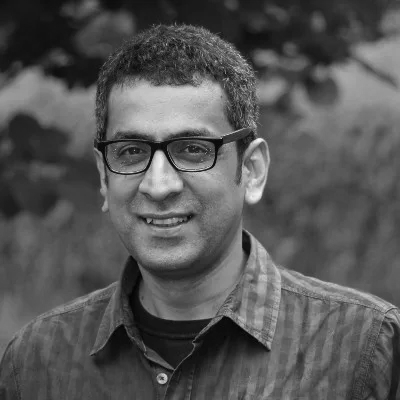For everyone, home in any form or shape, is a world to exist. It is a place that we grow with, and it gives us and our belongings a shelter. Some stay rooted in the same place, among familiar faces, for a long time. Some are required to move from one place to another, uprooted and surrounded by strangers.
Home is a sound one creates, a language one speaks and a move one makes. It’s not only an idea but also a practice of coming together within a social and intellectual milieu—it influences personal relations and communities, and vice versa. As a familiar space, everybody can participate in constructing and reconstructing the ‘home’ space. Actual or imagined, a home is a space for daydreaming, longing and memories from where new worlds can be visualised and constructed or reconstructed. For some, home is the country they live in, the language they speak. For a Marathi poet, Sant Dnyaneshwar from the medieval period, it’s the vishwa or the vast universe that he was part of. We embrace some form of home to belong to or live in as an essential part of our being.
The home comes in multiple forms set in a concentric circle. Starting with ‘I’ and my body; we extend it to ‘my’ family, school, neighbourhood, society and the universe.
Primarily, a home is a simple, four-walled concrete structure in a particular geographical site. It gets transformed through our active engagement with it. It turns into a dynamic space while pacing within the four walls, talking with ourselves and others, strolling around with the objects and our loved ones, overlooking a beautiful wall painting, or following a random stranger on the street through a binocular as Charulata does in a Satyajit Ray film. The interiors of a home—a verandah, a window, a floor, a ceiling, attic, a chullah, a corner, a crack in a wall, a drawer, a bookshelf, a kitchenware—all trigger human imagination. Noticed or unnoticed, seen or unseen properties and activities that we witness in a home play a significant role in our perception of it.
We witness the home differently and participate in the process of making and becoming a home. It leaves behind memories when one is no more under its wings.
Human beings living in a cave looked at it as a shelter. With the agricultural revolution, home emerged as a space within the larger territory of interdependent communities. In changing societies and cultures, home emerged as a base to move in and out. And, now we are in a time when the home is getting more complex and layered than being just a site providing comfort, security, and protection. It’s been going through enormous changes with the new forms of domesticity, family structures, and community life. Home has opened room for new meanings: negation, contemplation, and spirituality. It’s challenging to have an ideal home. Nevertheless, one aspires to have the perfect home-space that absorbs living and nonliving beings under its shelter.
At the beginning of her essay in the ‘Home’ edition of Hakara, Priyanka Tupe makes an interesting observation. She writes that, as a child, at least once in our life we scribble an article or draw a painting on ‘My Home’. Someone draws a home picture with a tree, a verandah or a road. Also, we paint a home with a mountain range, a river flowing through it, and a flying bird. Then, Priyanka asks: why don’t we see the neighbourhood houses while visualisng our home? Priyanka’s question is a provocation to look at home in a broader context of society and culture. The inside home is connected to the outside home. The two worlds are distinct spaces and circumstances, and at the same time they fuse together. At times, they confuse each other. The inside and outside of the home are negotiated and compromised.
Suddenly, the home has been everywhere since the pandemic year. Through the lockdown, connecting home with the world around has become weird. The strangeness of the activities between inside home and outside home has made many of us uncomfortable with emergence of two separate categories to divide us: homebound world and homeless world. In the worst situation, the denial of a home to a disadvantaged few became a matter of grave concern. In a mature and healthy society, everyone should get a space to live in and to belong to. It shouldn’t be just a dream but reality. As Václav Havel (1936–2011) says in his speech while receiving an honorary degree at Lehigh University in Bethlehem, Pennsylvania, “All the circles of our home, indeed our whole natural world, are an inseparable part of us, and a medium of our human identity. Completely deprived of all the aspects of his home, man would be deprived of himself, of his humanity.”
The ‘Home’ edition of Hakara is an attempt to reflect on home and homeness. I hope you enjoy reading it.
Share this:
- Click to share on Facebook (Opens in new window) Facebook
- Click to email a link to a friend (Opens in new window) Email
- Click to share on X (Opens in new window) X
- Click to share on LinkedIn (Opens in new window) LinkedIn
- Click to share on WhatsApp (Opens in new window) WhatsApp
- Click to share on Telegram (Opens in new window) Telegram



1 Comment
Rajaram Dakare
Very nice observations from Mrs.Tupe Madam. This ‘Home’ has touched and observed every sense of human life. It has zigzaged the heart and mind into past and present. The emotional, social, personal, spiritual and mental attachment has been expressed. The need of the acceptance of ‘All universe is one’s Home,’is important from the point of the winter? It’s mine point of view. THANKS MADAM for the writing on close to heart 💓 Home.